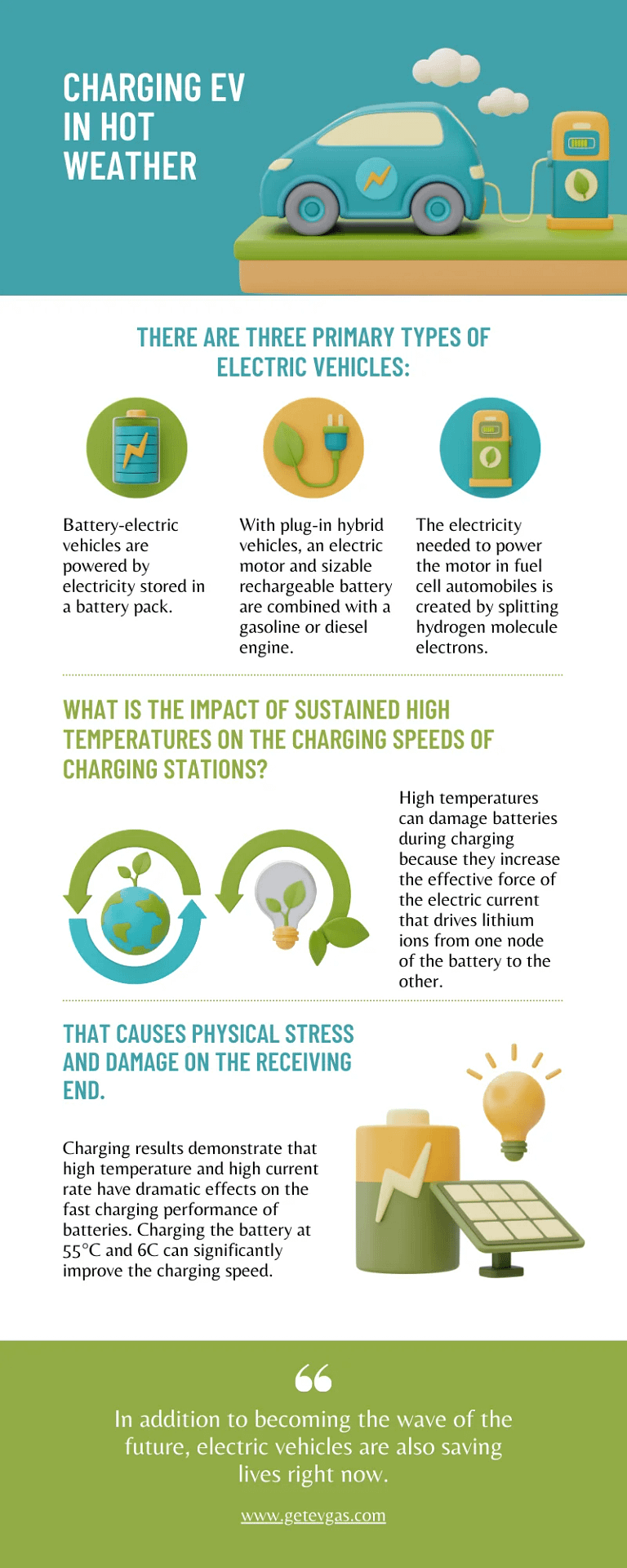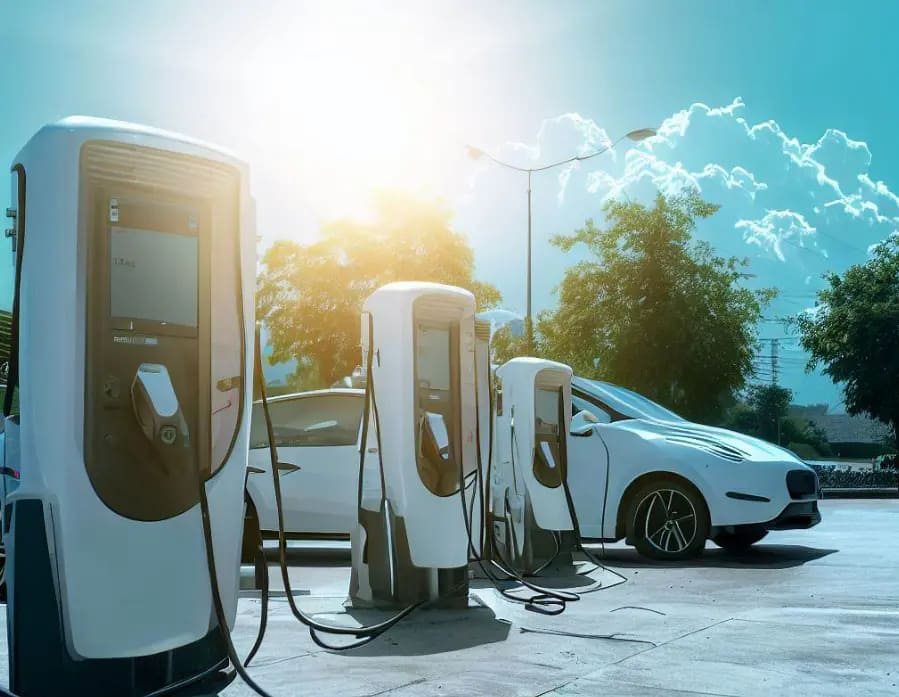A growing number of electric vehicles (EVs) on the road means a growing need for public charging infrastructure. As of 2021, there were over 1 million EVs on the road in the United States, and that number is expected to grow to over 10 million by 2030. The majority of EV owners charge their vehicles at home, but there is also a growing need for public charging stations, especially in areas with high EV adoption rates. Public charging stations can be found at shopping malls, grocery stores, workplaces, and other public places. They can be either fast chargers, which can charge an EV’s battery to 80% in about 30 minutes, or slow chargers, which take several hours to charge a battery. The cost of charging an EV at a public station varies depending on the type of charger and the location. So, How Does Hot Weather Affect EV Charging?

There are a bunch of problems with EV batteries when it gets hot, including:
High temperatures reduce battery capacity, so you’ll get a shorter range and lower performance when you use batteries.
Degradation of batteries: High temperatures can also cause batteries to degrade faster, resulting in shorter battery life.
High-temperature batteries can catch fire easier. This is a serious safety issue that can lead to injury and death.
Electric vehicle (EV) chargers can sometimes overheat during charging sessions, especially when charging at high power levels for extended periods of time. Overheating of the charger can be caused by various factors:
High temperatures can damage batteries during charging because they increase the effective force of the electric current that drives lithium ions from one node of the battery to the other.
That causes physical stress and damage on the receiving end.
Charging results demonstrate that high temperature and high current rate have dramatic effects on the fast charging performance of batteries. Charging the battery at 55°C and 6C can significantly improve the charging speed.
Fast charging deteriorates the battery faster than Level 2 charging, but that’s not necessarily worrisome for your EV, providing that DC chargers aren’t the primary source. Still, it’s best to avoid fast charging as much as possible in hot weather.

To mitigate these risks, charging stations are typically designed to operate in a range of temperatures. However, if the temperature outside the charging station gets too high, it is important to take steps to cool down the electrical system. This may involve using fans or air conditioning or even shutting down the charging station until the temperature drops.
It’s easy to see why heat waves increase electricity demand. People may use air conditioning to stay cool, which makes electricity more expensive. Added to that, businesses use more electricity to power cooling systems and other equipment, which can put a strain on the grid. That can lead to brownouts or power outages.
There’s also an increase in demand for public charging stations during heat waves. People may have to charge their electric vehicles more frequently as they drive to stay cool. This can cause charging station lines to get longer and even outages.
High temperatures can damage charging stations as well. Heat can damage the electronic components in charging stations, and extreme temperatures can damage electric vehicle batteries. If charging stations go out of service, it’s going to make public charging even more popular.
When the battery gets too hot, it can lose its ability to hold a charge and even damage itself. EV batteries are made up of lithium-ion cells, which are sensitive to heat.
It might take longer to charge the battery: As the temperature of the battery rises, so does its resistance. This means it’ll take more energy to charge the battery.
Battery degrades faster: Batteries can degrade faster if they’re exposed to high temperatures. This means they’ll lose capacity more quickly.
In hot, sunny climates, shade structures can help block the sun’s rays and keep the charging station cool.
Pavements that reflect heat, like concrete or asphalt, can help dissipate heat and keep charging stations cooler.
Installing fans or air conditioning units can help circulate air and keep the charging station cool.
Additionally, you can prevent overheating at charging stations with a few operational practices. These include:
The charging station can be scheduled to charge during off-peak hours, when the electricity demand is lower. This can help reduce the amount of heat it generates.
You can manage the charging process and prevent overheating by using smart charging technology. It monitors battery temperature and adjusts charging rate accordingly.
These steps prevent charging stations from overheating and keep them safe